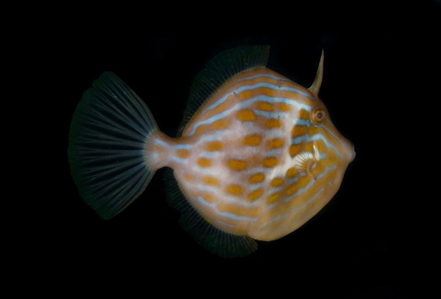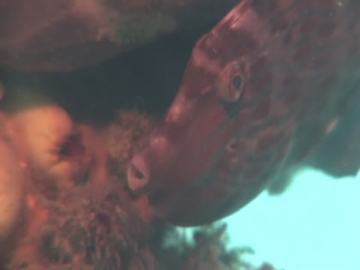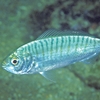General Description
Body very compressed, roughly circular in females and juveniles, oval in males; ventral flap small; tail base shallow without spines; dorsal spine above eye with small barbs; abdomen not inflatable. Adults usually blue to brown-grey with yellow spots and patches on side. Young fish yellow or pale grey, with horizontal blue lines or brown blotches on the side. To 60 cm.
Biology
These leatherjackets are reasonably common on deeper offshore reefs and trawling grounds, also in harbours and bays. Juveniles are frequently around piers and jetties, or under jellyfishes.
Habitat
Inshore and offshore reefs, in depths of 6-150 m.
Reefs
Distribution guide
Southern Australia.
Species Group
Depth
Shallow (1-30 m)
Deep ( > 30 m)
Water Column
Max Size
60 cm
Diet
Carnivore
Harmful
Large dorsal spine could punture skin.
Commercial Species
Yes
Global Dispersal
Native to Australia
Identify
Conservation Status
- DSE Advisory List : Not listed
- EPBC Act 1999 : Not listed
- IUCN Red List : Not listed








